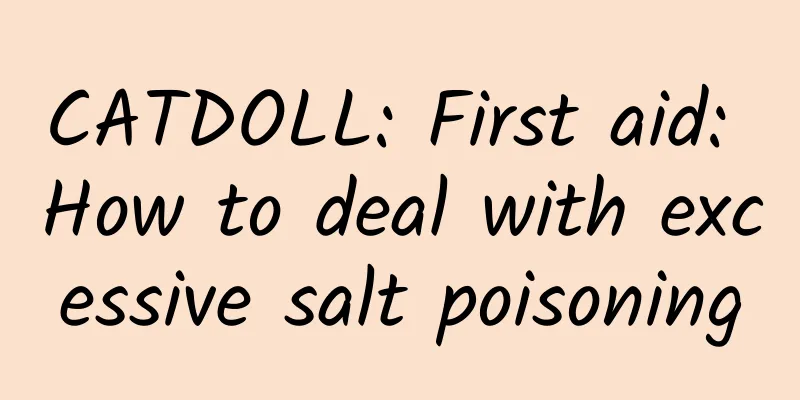CATDOLL : CATDOLL: Why do people still fish for bloodworms despite the risk of infection? What is the value of bloodworms?

Why do people still fish for bloodworms despite the risk of infection? What is the value of bloodworms?Many years ago, a lucrative way to make money emerged, that is, catching bloodworms. Sometimes, if you are lucky, you can catch hundreds of kilograms in one night, and you can make a net profit of tens of thousands of yuan by selling them, so it is a good way to get rich in the eyes of some people. However, catching bloodworms was cracked down by national law enforcement a few years ago. It is an illegal and harmful behavior to one's health. Every year, people are fined heavily for catching bloodworms, and they are injured and infected during the fishing process, but there are still people who continue to join this industry. What kind of charm do bloodworms have, or what value makes so many people devoted to them? The red worm we are going to talk about today is the chironomid larvae. Its appearance is not outstanding. It is just a worm with a dark red body color. It is a bottom animal in freshwater waters and an excellent natural bait for fish. Its nutritional value is extremely high. At the same time, it is considered to be the best live feed for tropical fish in the world. Red worms can promote the growth and development of fish, and will not cause water pollution in the breeding pond. In addition, it can remove organic debris in the water body, so it has the function of purifying water quality. In the larval stage of many economic aquatic animals, red worms are used as the main natural bait. The fishy smell emitted by red worms will attract fish and increase their appetite, so many anglers like to use red worms as bait. Some anglers say that as long as you use red worms to fish, you rarely fail to catch fish, even in the cold winter when there are few fish, you can still catch fish. Therefore, bloodworms have become more and more popular as bait in recent years, and their prices have continued to rise. The price of bloodworms in fishing tackle stores and aquariums has soared to about 200 yuan per catty. In the past, there were still a lot of bloodworms, and any random fishing could make up for the injuries. After tasting the sweetness brought by bloodworms, more and more people have joined in, but the good times for these bloodworm fishers are not long, because since 2018, my country has increased law enforcement on the fishing of bloodworms, and all localities have improved laws and regulations to crack down on illegal fishing of bloodworms. This year, a bloodworm fishing gang was sentenced to compensate 40 times the actual value of the goods. In fact, fishing for bloodworms not only has to pay a huge fine, but also endangers one's own life safety. Because bloodworms usually feed on insects, algae, debris, etc., these animals often live in sewage ditches and stinky ditches, so bloodworms often live there. But these places usually contain a lot of domestic waste, such as glass fragments, sharp wires and wooden sticks, which can scratch the fishermen's bodies, causing skin breaks at the very least and infection at the worst. A man who fished for bloodworms got his hands infected because of scratches during the process. His hands were swollen like wearing cotton gloves. After a long period of treatment, he recovered, but he still caused indelible damage to his body. Fishing for bloodworms not only causes damage to people, but also destroys the ecological balance. Nowadays, mechanical sand-dredging boats are usually used to fish for bloodworms. The towing pump on the boat is used to extract the silt from the river bank and then filter out the bloodworms in the silt. This behavior will destroy the underwater ecosystem, resulting in the destruction of the living space of fish, plankton, aquatic plants, etc. on the bottom of the water. In addition, these mechanical boats will emit a large amount of diesel when walking on the river surface, polluting the water quality in the river. It is for these reasons that the authorities will severely crack down on the fishing of bloodworms to ensure biological diversity. But over the years, some people have linked redworm disease with redworms, and claimed that catching redworms is beneficial to humans. Redworm disease is an acute febrile disease caused by the bite of scrub typhus larvae. Its main host is mice and has nothing to do with redworms. Although redworms are the larvae of chinchillas, they will not bite people, so they do not pose any threat to humans. Moreover, redworms will eat organic matter that pollutes water quality. They have the function of cleaning water quality and are also indicators for detecting water quality. The more organic microorganisms there are in the water body, the more redworms there are, which means that the place is worse. Therefore, catching redworms will only get some small profits, which is not worth it compared with human health and safety. What do you think? Because this kind of red worm can purify water sources, it can optimize water sources and make the nutritional value of water sources higher. It is also a very good bait that can better attract fish. The price of this kind of red worm is very high, so some people still catch it. This is because if this kind of red worm is sold on the market, the price will be very high. Red worms can be used as fertilizers and can be used to grow flowers and plants. This kind of worm can purify water quality, and can also become fish feed and bait. Many anglers will buy red worms. Artificial breeding of red worms: How to breed red wormsOutdoor farming method: Cement pools or earth pits can be used. Generally, the pool is 1m deep and 10-30m in area. Use bleaching powder or quicklime 10ppm to dry clean the pond, expose it to the sun for 7 days, add 0.5m deep water, and then expose it to the sun for another 7-15 days before fertilizing. Put horse manure or other animal manure 1.5kg/m3 in the cement pool as base fertilizer. The amount of fertilizer applied to the earthen pond is 4kg/m3, with horse manure or other animal manure and 1.5kg of non-toxic plant stems and leaves such as straw as basal fertilizer. The purpose of basal fertilizer application is to promote the massive reproduction of algae in the water body and provide the necessary material basis for the growth and reproduction of Daphnia. Catch Daphnia from ponds or small rivers, wash and disinfect them, and then put them into the pond. When the water temperature is 18℃-25℃, Daphnia will begin to reproduce in large quantities after about 3-4 days. Catch them every 1-2 days, and catch about 10%-20% each time. After several catchings, if the amount of Daphnia decreases, stop catching, add new water immediately, and apply appropriate amount of topdressing. The amount of topdressing should be adjusted appropriately according to the changes in water color and weather. Normally, the pond water should be yellow-brown and the water transparency should be maintained at about 30cm. If the water is too clear, more fertilizer should be applied. If the water is dark brown or black-brown, less fertilizer or no fertilizer should be applied. When applying topdressing, multiple fertilizers should be used crosswise (manure, ammonia fertilizer, nitrogen fertilizer, phosphate fertilizer, etc.), and do not use a single fertilizer, so as to maintain a dynamic balance of various elements in the water. Indoor cultivation method: Indoor cultivation is less affected by weather changes and the cultivation conditions are easier to control. The disadvantage is that it can only be produced in small quantities. Wooden barrels, glass jars and other containers that can hold a certain volume of water can be used as cultivation equipment. When cultivating, first inject clean water (natural water or tap water) into the culture container, expose it to the sun for 3-4 days, and add 1.5kg/L of fresh horse manure, 20g of fertile soil, and 2g of straw or stems and leaves of other non-toxic plants. Manure and soil can be added directly. Cut grass into pieces and boil them before adding. Then stir with a wooden stick and let it stand for 2 days. Finally, introduce the seeds. 8-12 per liter is appropriate. After 3-4 days, Daphnia will begin to multiply in large numbers. Fertilize every 5-6 days according to the fertility of the water. Additional information: Nutritional value: Bloodworms contain a lot of protein, up to 40%-60% of their dry weight. Protein contains all the amino acids needed for fish growth. It is reported that protein bait can only increase the metabolic intensity of goldfish by 20%-30%, but if goldfish are fed with Daphnia, the metabolic intensity can be increased by 100%. Daphnia also has a very high fat content, and goldfish will become fatter after swallowing it. The carbohydrates, calcium and vitamins in Daphnia are also very rich. The nutritional value of Daphnia as bait for goldfish is unmatched by other granular baits. It not only has high protein content, but also contains essential amino acids, vitamins and calcium for fish. Daphnia is a high-quality bait for freshwater fish such as eels. It is relatively easy to cultivate. For small-scale breeding, bottles, cans, tanks, etc. can be used; for large-scale breeding, earthen ponds and cement ponds can be used. Reference: Baidu Encyclopedia - Red worm Red worm (water flea) breeding technology: light source: First, prepare a container. It can be a small tank, a pet box, a PET bottle, etc. The best suggestion is to use a container with a larger area of contact with air. Because Daphnia will float to the surface of the water and have a breathing-like movement, if there are a large number of them, some of them may not be able to compete for a position and die. Light source: Generally, breeders are told that as long as there is light, it will be fine. Then...what about at night? Won't they all sink to the bottom? That's right, they sink to the bottom, and as a result, most of them die the next day. Why? Because they are too lazy to breathe. Therefore, it is recommended that the light source should not be turned off at night. You can use a small light source (such as a 5w night light, etc.) to avoid this trouble. Of course, some people will say, do you have to raise it like this? The answer is not necessarily, but there is a necessity to have a large number of them. We raise it not just for fun, the key is the number of pots, and the number must be enough to feed the fish, right? Feeding: Generally, people tell breeders to feed Daphnia with yeast powder soaked in water, but if the amount is not well controlled, the water quality will deteriorate quickly, causing Daphnia to die quickly, and then they will have to buy Daphnia again or ask for more from others. So, my method can be considered to prevent this. At the same time, you don’t have to worry too much about buying yeast powder, because sometimes yeast powder is hard to find, or it comes in a big bag and you can’t use it up. Because later I thought, if I soak yeast powder in water and feed them, then can I feed them with anything that is soluble in water? The answer is yes, because Daphnia are filter-feeding creatures, so they generally survive by filtering nutrients in the water, because if the things we throw down are soluble in water, they can eat them. Because, Daphnia tried "sheep blood" to feed and found that the effect was good, and later I heard that the reason for using yeast powder is that there are some amino acids in it, and Daphnia can eat this. As for amino acids, I can't get them, so I have to use fresh milk, I believe it will also have a good effect. Daily care: In fact, you don't need to pay much attention to them. Just give them light and some feeding. As for changing the water, after sucking out the water fleas each time, add the amount of water that was sucked out. If there are too many algae, it's also good to put some apple snails. As for the effect, it depends on you to try it yourself. As for the amount of feeding, don't feed too much at a time. 2~3cc at a time is enough. Don't think it's too little. This is enough and it won't cause the water quality to deteriorate at once. As for filtering water fleas, this is much easier than filtering brine shrimp. If you don't want to filter, you can use its phototropism to do it. Use light to attract them and then suck them out with a dropper, then wash them with plenty of clean water, and then you can feed them. If you want them to be more nutritious, feed them some nutrient solution before feeding, and feed them to the fish after one to two hours. Huhu, this is more nutritious. |
<<: CATDOLL: How to tell the age of a cockroach
>>: CATDOLL: What are some animals called "tigers" that are not tigers?
Recommend
CATDOLL: There are many unknown small insects at home. How can I get rid of them? High score!
1. First of all, installing window screens with m...
CATDOLL: What kind of people keep spiders? (What kind of people keep spiders?)
1. Is it normal for children to keep spiders? It ...
CATDOLL: How many kilograms of cotton quilts are equivalent to one kilogram of silk quilt?
1. How many kilograms of cotton quilt are equival...
CATDOLL: How to deal with the newly bought red worms before feeding them to fish (How to deal with the newly bought red worms before feeding them to fish)
1. What is the correct way to mix red worms into ...
CATDOLL: What is the difference between the Chinese soft-shell turtle and the golden coin turtle?
What is the difference between the Chinese soft-s...
CATDOLL: Why do some cacti produce red spider mites?
1. Scale insects Some flower lovers have doubts a...
CATDOLL: How to Care for Orchids 6 Ways to Care for Orchids
Table of Contents Method 1: Choosing an Orchid 1....
CATDOLL: What to do if the spider doesn't recognize its owner?
1. Can you develop feelings for your reptiles and...
CATDOLL: What box is good for raising ants? (What box is good for raising ants?)
1. Which type of nest is best for raising ants? U...
CATDOLL: Where can I buy earthworms?
1. Where can I buy earthworms? Fishing tackle sho...
CATDOLL: Will mountain bees swarm in August and September?
Will mountain bees swarm in August and September?...
CATDOLL: Golden cicada breeding technology and production (Golden cicada breeding technology and production)
1. What are the techniques and benefits of growin...
CATDOLL: What kind of environment is needed to raise snails? (Video on What kind of environment is needed to raise snails)
1. Where to artificially breed snails? 1. The bre...
CATDOLL: What is the market prospect of farmed cockroaches (marketing of farmed cockroaches)
1. Market prospects of cockroach breeding Althoug...
CATDOLL: Which turtle is the most beautiful and easy to raise?
The top ten easiest turtles to raise are: 1. Alli...









